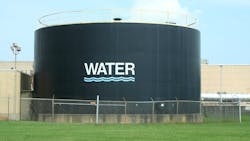Why mitigating water risks makes sound business sense
The acknowledgement that a business’s long-term financial stability is tied to environmental sustainability is bringing about a paradigm shift in the way companies operate. Water is a growing area of concern, with businesses around the world reaching the realization that they face diverse and complex water risks, in tandem with numerous other threats exacerbated or caused by climate change.
Water crises are already forcing companies to change geographies, strategies and priorities, and business leaders are increasingly cognizant of the need to improve foresight of potential water-related risks. It is a subject that is impossible to ignore, ecologically and economically.
From a purely pragmatic standpoint, acting immediately, rather than waiting to remedy issues after the fact, makes sound financial sense. According to a 2021 report from CDP, a non-profit that operates the world’s environmental disclosure platform, “The cost of water risks to business could be over five times greater than the cost of taking action now to address those risks.”
Businesses experiencing water-related crises are counting the cost of past inaction and learning from their mistakes. Across the board, business leaders are seeking to understand how they can better prepare for and mitigate water risk, adapt to changing scenarios, reduce pollution, cut consumption and play a role in the conservation of water supplies.
Measuring what matters to ensure water security for a single facility or an entire industry requires assembling multiple data points and making sense of the data through an environmental and financial lens. In doing so, a company can not only take steps to ensure their water security, but also, to fulfill their ecological commitment and responsibilities to the community.
Water is a resource shared and used by almost every sector, and we are seeing some innovative solutions being adopted across a broad variety of industries.
Food and beverage producers, for example, are among the heaviest consumers of water. In this sector, large producers are significantly reducing their water use by developing much more efficient irrigation methods or by streamlining production methods to increase water use efficiency, while simultaneously reducing pollutant discharge loads.
To offer one good example, in southern California, an extremely water-stressed region, farmers cultivate approximately one million acres of alfalfa. Growing alfalfa consumes a great deal of water, as the crop is fed using a technique called flood irrigation, where a berm is built around the field and the area is then flooded. This method is incredibly wasteful because much of the water evaporates. To solve this problem, many farmers are now transitioning to sprinkler irrigation or drip irrigation, which are much more efficient techniques.
Some food and beverage companies are also playing stewardship roles by working towards improving watershed health and access to safe drinking water. Starbucks, for example, is investing in initiatives that provide clean water, sanitation and hygiene to underserved communities, and providing support for improving climate resilience and long-term water security in areas with extremely high-risk basins located in Colombia, Brazil, China, Mexico and the United States.
The IT sector is also making huge strides. Great advances have been made in the recycling of rare earth elements from electronic waste, for example. Rare earth materials are an essential component of everyday tech essentials such as cellular phones, televisions and monitors, computers and electric vehicles. Their supply is extremely limited and the mining of these materials entails water-intensive extraction methods, hence the importance of improving recycling.
Tech companies are partnering with cities to build water reuse facilities and are developing data centers and chip factories — traditionally requiring vast amounts of water — that use less water or source supplies from recycled sources, instead of drawing upon fresh water supplies.
In water-scarce Arizona, Intel has funded more than 15 water restoration projects which it claims are on track to restore approximately one billion gallons each year. The company says it has achieved net positive water at manufacturing facilities in the U.S., India and Costa Rica, reclaiming and returning more fresh water to local communities than it withdraws.
Meanwhile, a spokesperson for the new Taiwan Semiconductor Manufacturing Co. plant in Phoenix, Arizona — which is expected to become one of the city’s biggest consumers of water — told a local newspaper that “approximately 65 percent of the water used in the Arizona fab will come from TSMC’s in-house water reclamation system, helping to reduce city water consumption.”
For businesses today, reducing water risks and increasing water efficiency go hand in hand, as the more efficient a process becomes in using water, the more it contributes towards reducing risk. The primary goal for companies is to maximize their triple bottom line — achieving results in terms of revenue, as well as social and environmental impact. Ultimately, companies, communities and our planet all profit.
Jay Famiglietti is executive director at the Global Institute for Water Security.
Jose Ignacio S. Galindo is CEO and cofounder at Waterplan.
